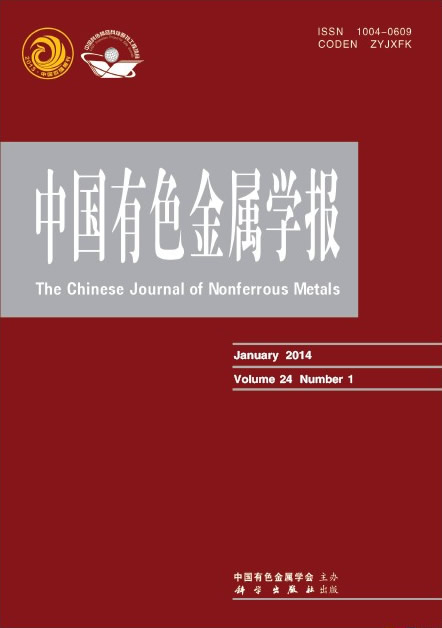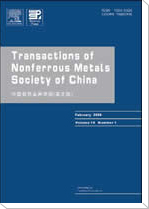(1. 中南大学资源加工与生物工程学院生物冶金教育部重点实验室,长沙 410083;
2. 环境保护部华南环境科学研究所,广州 510655)
摘 要: 利用生物浸出的方法实现废覆铜板分选渣中残留铜的资源化,主要研究Fe2+物质添加量、浸出时间、初始pH和渣投加量(固形物含量)等因素对不同来源废覆铜板渣中铜生物浸出的影响。结果表明:生物浸出铜过程中无需额外再添加Fe2+能源物质且能够短时间内(≤5 h)快速高效浸出不同来源分选残渣中的铜;初始pH和渣投加量对废覆铜板渣中铜浸出产生显著影响。优化结果表明:控制初始pH≤2.2,渣投加量20%~30%,无额外添加酸和Fe2+,两种分选残渣生物浸出5 h后,铜浸出率可达95%以上。
关键字: 废覆铜板;分选残渣;生物浸出;铜回收;嗜酸铁氧化富集物
(1. Key Laboratory of Biometallurgy, Ministry of Education,
School of Minerals Processing and Bioengineering, Central South University, Changsha 410083, China;
2. South China Institute of Environmental Sciences, Ministry of Environment Protection, Guangzhou 510655, China)
Abstract:Recycling of the flotation tailings of waste copper-clad laminates was achieved by bioleaching method, the effects of Fe2+re-addition, leaching time, initial pH and pulp density on the copper extraction were investigated. Theresults show that an effective copper extraction can be achieved without re-addition of Fe2+within 5 h. The initial pH and pulp density play important roles in copper extraction. Under the optimized condition of initial pH≤2.2 and pulp density 20%-30%, the Cu leaching rate is more than 95% in 5 h without re-addition of Fe2+ and acid.
Key words: waste copper-clad laminate; flotation tailings; bioleaching; copper recycling; acidophilic iron-oxidizing enrichment


